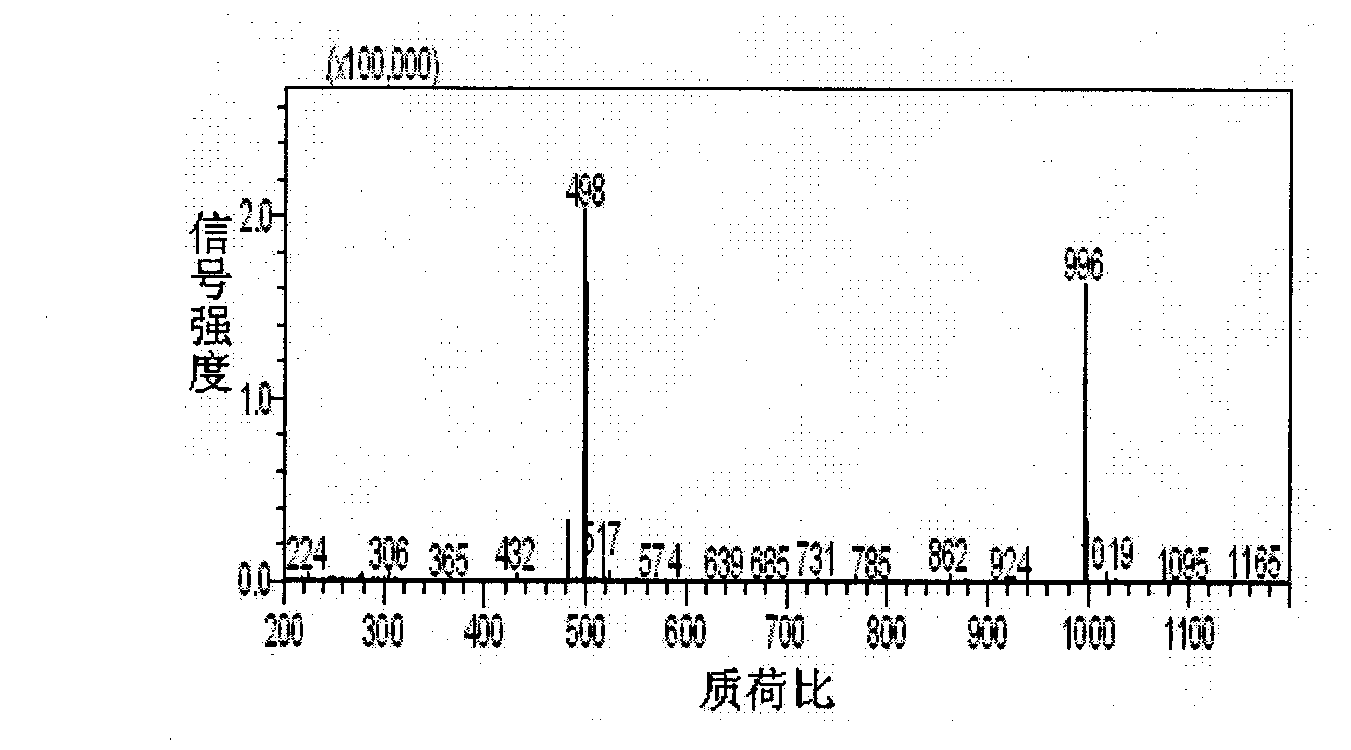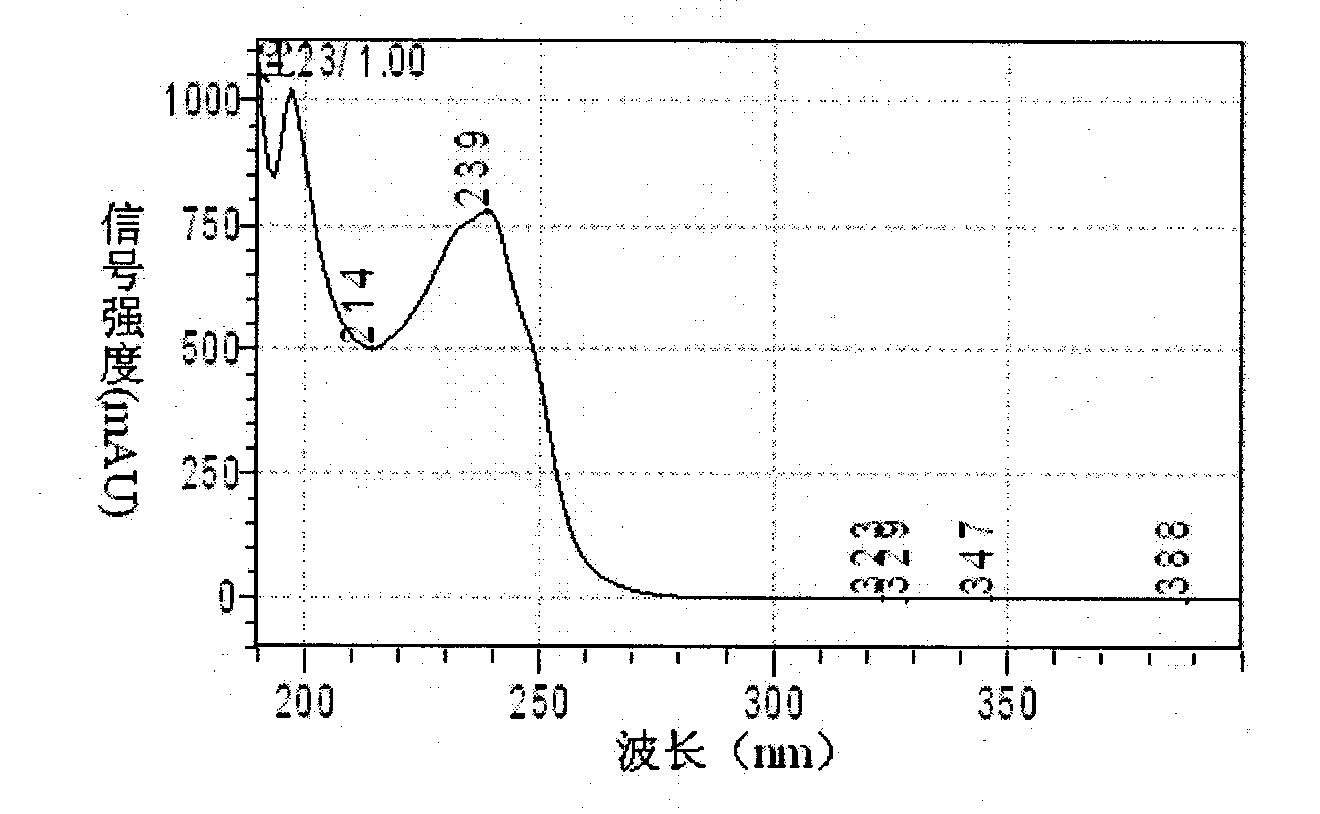Hybridoma cell strain YNEMC3, monoclonal antibody generated thereby, and application of monoclonal antibody
A hybridoma cell line and monoclonal antibody technology, applied in the biological field, can solve the problems of inability to distinguish microcystins, false positives in screening, poor selectivity of monoclonal antibodies, etc., achieve high sensitivity, eliminate false positives in screening, and quantitatively accurate Effect
- Summary
- Abstract
- Description
- Claims
- Application Information
AI Technical Summary
Problems solved by technology
Method used
Image
Examples
Embodiment 1
[0021] Example 1: Preparation of hybridoma cell line YNEMC3 (CCTCC NO: C201298)
[0022] 1. Preparation of Microcystin LR
[0023] Fresh algae samples were taken from Dianchi Lake, screened and freeze-dried to obtain cyanobacterial algae powder; the cyanobacterial cell wall was destroyed with acetic acid solution, so that algal toxins overflowed the cells; using SPEC 18 The column is concentrated and enriched to obtain the algal toxin extract; the algal toxin extract is separated by liquid chromatography to collect the MC-LR separation solution; the separation solution is concentrated and then used with C 18 Column purification, collecting the crude MC-LR extract; further separation by fluorescence-silica gel-thin layer plate to obtain refined microcystins; detected by liquid chromatography-mass spectrometer (LC-MS) with PDA detector , under the reference of MC-LR standard sample, the external standard method is used for quantification, and the purity and concentration of MC-...
Embodiment 2
[0061] Example 2: Preparation of Microcystin LR-Specific Monoclonal Antibody
[0062] 1. Preparation of ascites: Female Balb / c mice were selected, and 0.5 mL of liquid paraffin was intraperitoneally injected into the mice one week before the inoculation of hybridoma cells. After the hybridoma cells screened in step 5 of Example 1 were expanded and cultured, the supernatant was discarded by centrifugation, and the cell concentration was adjusted to 2 × 10 6 per mouse / mL, each mouse was intraperitoneally injected with 0.5 mL;
[0063] On the 13th day after the inoculation of hybridoma cells, the abdomen of the mice was obviously distended. After disinfecting the skin of the lower abdomen with alcohol cotton balls, the ascites was extracted with a 5mL syringe with a needle. Place the collected ascites in a centrifuge tube at 5000rpm for 10min, and collect the supernatant, which is the ascites containing monoclonal antibodies. Add 50% glycerol to the obtained ascites and place th...
Embodiment 3
[0072] Example 3: Competitive ELISA detection of microcystin LR
[0073] Using the extracted and purified MC-LR as the antigen-coated ELISA plate, the detection results of the competition ELISA between the monoclonal antibody secreted by the hybridoma cell line YNEMC3 and the MC-LR standard of different concentrations showed good experimental results, and the detection limit was 0.1 μg / L. Four wells were set for each concentration, and the corrected absorbance value after deducting the average absorbance value of the blank control from the average absorbance value of the four wells was the ordinate, and the logarithm of the concentration was the abscissa to draw a curve. The results are shown in Figure 5 . The results in the figure show that the monoclonal antibody MC-LR prepared with the hybridoma cell line YNEMC3 has a linear relationship with the competitive ELISA detection results of MC-LR standard samples of different concentrations, indicating that the prepared monoclo...
PUM
 Login to View More
Login to View More Abstract
Description
Claims
Application Information
 Login to View More
Login to View More - R&D
- Intellectual Property
- Life Sciences
- Materials
- Tech Scout
- Unparalleled Data Quality
- Higher Quality Content
- 60% Fewer Hallucinations
Browse by: Latest US Patents, China's latest patents, Technical Efficacy Thesaurus, Application Domain, Technology Topic, Popular Technical Reports.
© 2025 PatSnap. All rights reserved.Legal|Privacy policy|Modern Slavery Act Transparency Statement|Sitemap|About US| Contact US: help@patsnap.com



